“This is a noble sea… calm and welcoming, majestic in size.”
These are the imaginary words of Captain John Smith, who led two expeditions up the Chesapeake in southeastern America in the early 17th century in search of gold and silver.
He found neither, but he did discover the vast expanse of water that later inspired James Michener’s 1978 novel Chesapeake. The 1,132-page novel of historical fiction takes you on a rollercoaster ride through 400 years of American history.
The Chesapeake River, also called a bay or estuary in the United States, flows south from Havre de Grace, Maryland, just north of Baltimore, to empty into the Atlantic Ocean 200 miles (320 km) near Norfolk, Virginia.
It is so wide you could be at sea and has witnessed many important events in American history, yet it is virtually unknown in the UK.
Not for me, mind you. After reading the book over and over again, the real-life estuary had become a kind of pen pal I longed to meet – a beloved book in hand, like a water-based Portillo.
A trip from Washington DC to Norfolk and back with American Cruise Lines was just the ticket. And it had the added bonus of going all out with history and having a theme that went back to the American Revolution.
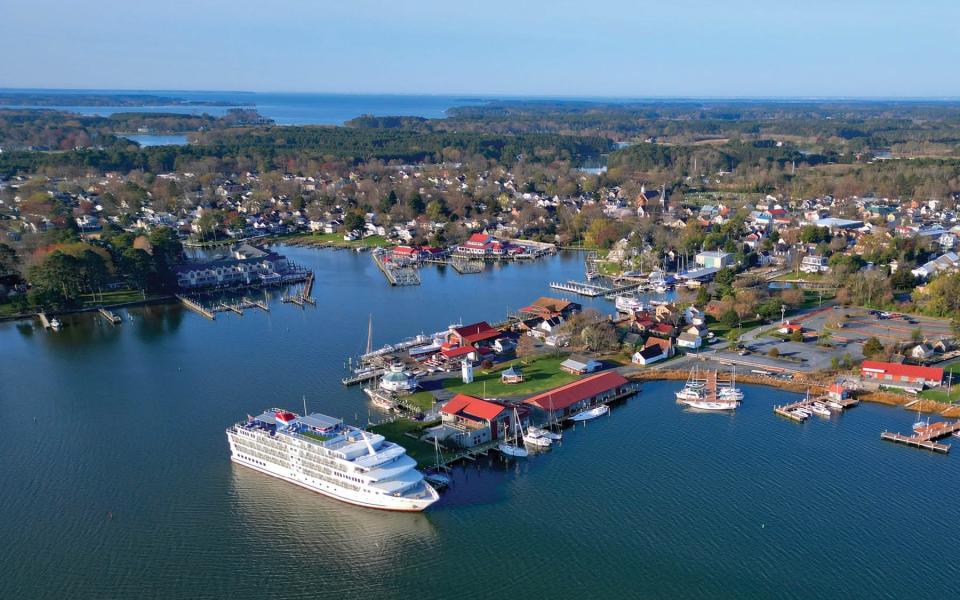
The book begins in 1583 with Pentaquod, a Susquehanna Native American, who escapes his tribe to find a new life on the Chesapeake. It then moves on to the expeditions of Captain Smith, before following the fortunes of three families—the Catholic plantation- and slave-owning Steeds, the boat-building Paxmores, and the swamp-loving Turlocks—who made their home on the banks of the Choptank, a river that flows into the Chesapeake.
Captain Smith, George Washington, Daniel Webster and Henry Clay all really existed, as did a few others who appear in the book – but Michener says most of the characters are fictional, as are many of the places. That may be so, but I suspect they are based on real people and events.
Harriet Tubman, a slave who escaped and risked her life on the Underground Railroad to bring other slaves to the North, clearly inspired Michener’s character Eden Cater. I also learned that men actually hired themselves out as slave breakers, and that watermen died in interstate oyster wars – both issues addressed in the book.
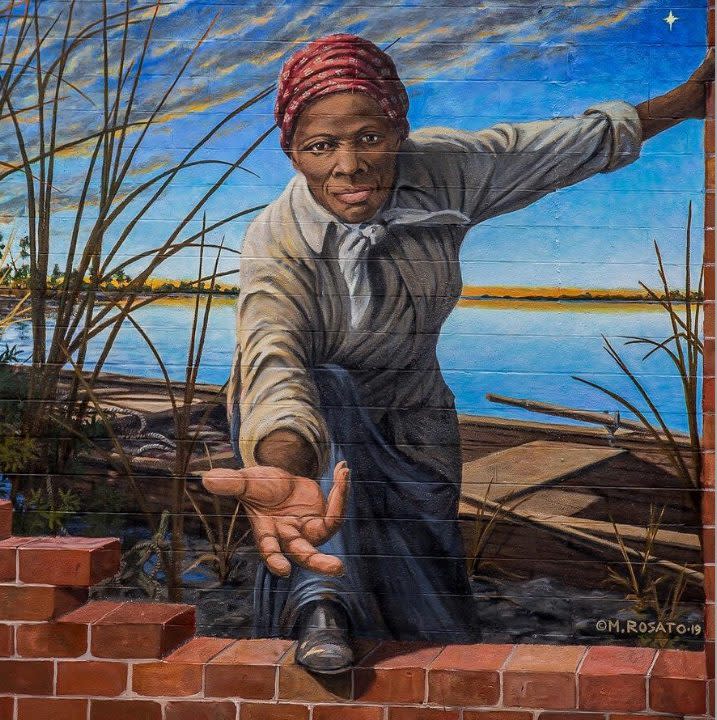

Likewise, Catholics who fled to the New World to escape religious persecution in England found they were not welcome in Jamestown, Virginia, the first permanent English settlement in the United States. In the book, Catholic Edmund leaves Jamestown and moves to an island in the more tolerant Maryland, which was actually owned by Lord Baltimore.
How he came to own a distant land he never set foot on was explained by my guide, John, as we walked through Annapolis. Lord Baltimore wanted land in the New World for a short time, he said simply, and King Charles I gave it to him.
The colonial old town—small, with a very pretty harbor—was where George Washington, expected to govern the new United States after the war was won, resigned his military commission in 1783, establishing the power of civilian authority over the military. “This is where our democracy was born,” beamed John.
Every day was a fascinating dive into history—even in Cambridge, a city across the Choptank from the fictional Patamoke, where I joined a bike tour to the Blackwater Refuge in search of the swamps where Michener’s wily Turlocks lived with their many wives and children, hiding from the authorities and shooting geese. I found the swamps and spotted wildlife, but I also met Susan, a descendant of the Nanticoke tribe who came into contact with Europeans during Captain Smith’s expeditions.
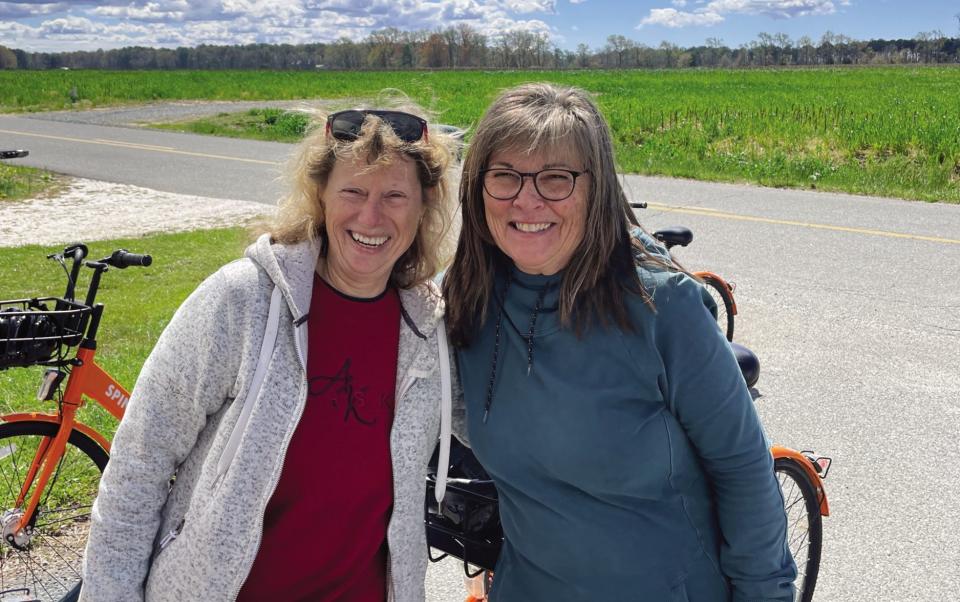

This was worth its weight in gold for my quest, as was St. Michaels, a town of large wooden houses that undoubtedly provided the inspiration for Patamoke, the fictional settlement at the heart of Michener’s book.
Like Patamoke, it was surrounded by forest 300 years ago, the site of a major shipbuilding industry – and a prime target for the British during the War of Independence and the War of 1812. Local legend has it that one night in 1813, locals were told to turn out their lights and hang lanterns from the treetops so that attacking British gunboats would aim too high. Apocryphal, I’m sure, but it must have captured Michener’s imagination: in the book, Paxmore saves his shipyard by tricking the British into burning a “dummy.”
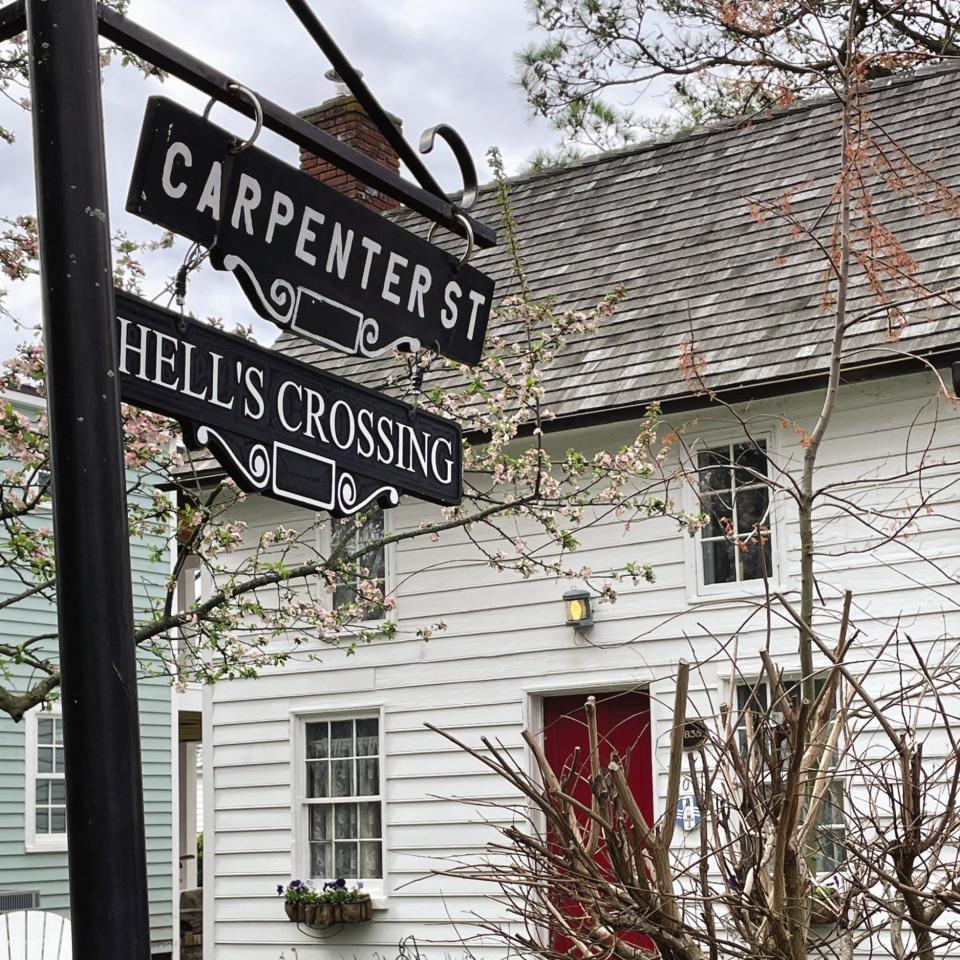

And the connections kept coming. In the book, Julia, a descendant of the slave Cudjo, works in a crab-picking factory in Patamoke—so I was excited when our guide Kathy told us we had pulled up to what was a crab-picking factory, one of the first African-American-owned businesses in the area.
The site is now in a maritime museum, where I discovered an exhibit dedicated to skipjacks, a shallow-draft sailboat for “drudging arsters”—Aquarius-speak for “dredging oysters,” used in Michener’s writings. It’s hard, cold work, but the mollusks and blue crabs are still hugely important to the economy of the eastern Chesapeake.
Near the museum, I came across a replica of the pinnace—essentially an oversized rowboat—in which Captain Smith and 12 men explored the Chesapeake in June 1608. It was an eye-opener, especially in the context of the bay’s choppy, white-capped waves.
The same was true of replicas of the three boats that the first English colonists used to cross the Atlantic in 1606. The Susan Constant, Godspeed, and Discovery, on display at Jamestown—an open-air museum near Yorktown—seemed utterly unfit to sail any ocean, let alone the Atlantic in winter. Yet somehow they made it.
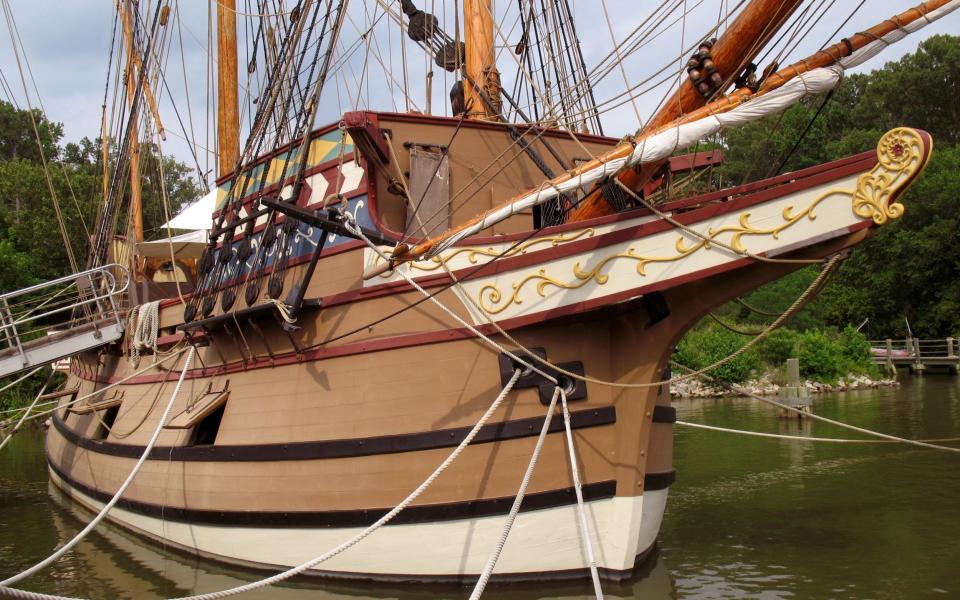

From there, however, things went downhill. With 104 colonists among them, they arrived in May 1607, to find gnats and mosquitoes. A year later, only 38 were left alive. More soon arrived from England – bringing the number to 500 – but when the settlement was besieged by Indians in 1609, a great famine ensued and by the time it was all over, only 60 colonists remained.
Of course, their fates eventually changed—and just 173 years later, the descendants of these colonists won their independence from a country that had not lost a war in 700 years. Like the book, my journey of discovery was a whirlwind tour through one of the most turbulent but fascinating periods in American history—and now, as I scan the long-beloved words of this trusted friend, my mind will fill with images of their real-world inspiration.
Essential
Jane Archer has been a guest of American Cruise Lines and Fred Holidays.
American Cruise Lines offers the 10-night American Revolution cruise, round-trip from Washington DC, with calls in Annapolis, St Michaels, Cambridge, Norfolk and Yorktown.
Fred Holidays (0800 021 3172) is ACL’s preferred UK partner, offering prices from £6,299pp (onboard the traditional 170-passenger American Constitution) and £7,299pp (onboard the 100-passenger catamaran American Glory), including flights, transfers, one night’s accommodation in Washington DC pre-cruise, all meals, drinks, gratuities and selected excursions.